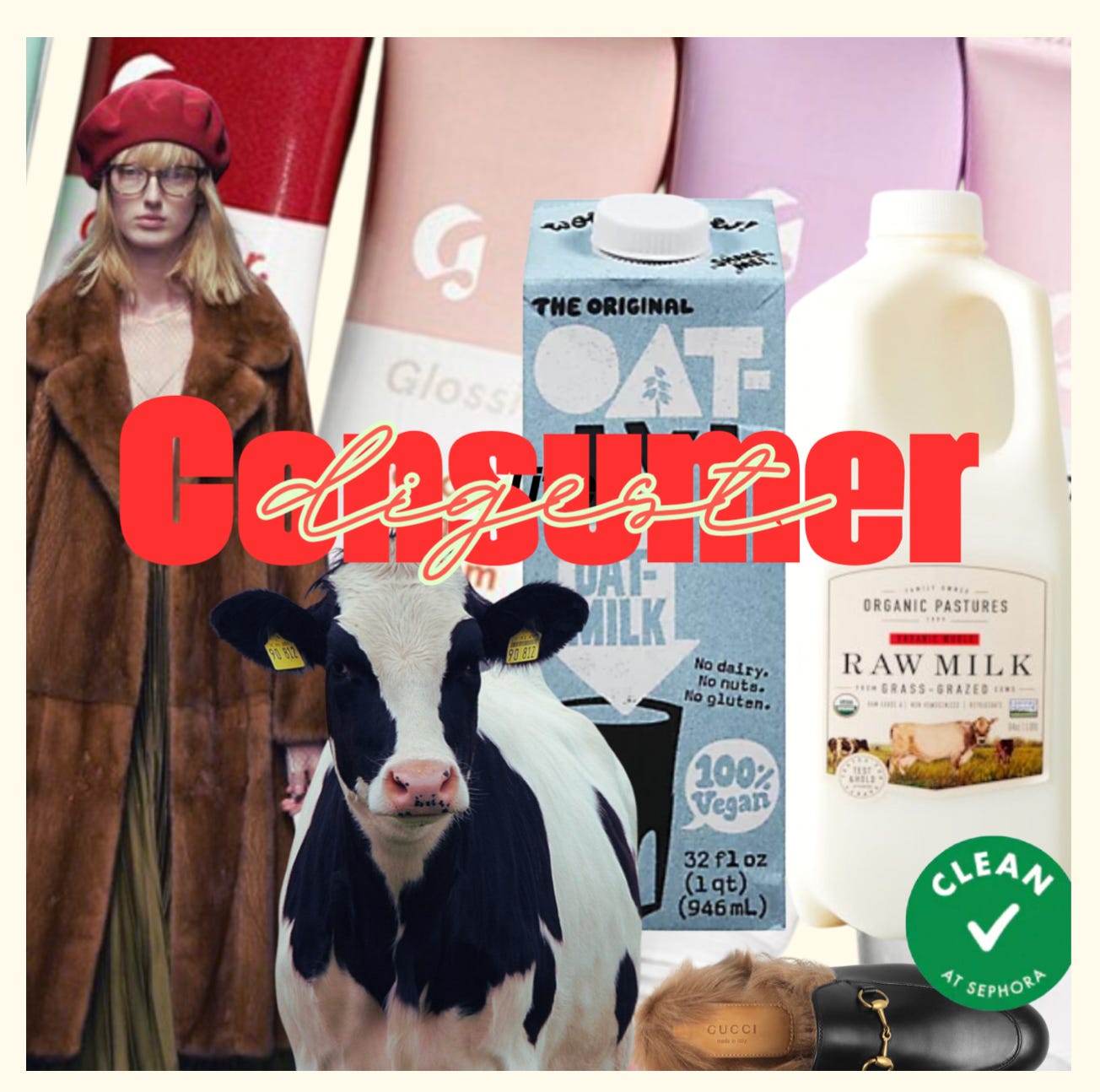You Are What You Eat: How Beauty Fads and Food Trends Fuel the Extremity Economy
All Extremities Lead to Consumption: How shifting food and beauty trends drive consumers through fear, fads, and ever-changing ideals.
All extremities lead to consumerism. I wanted to discuss my biggest realization to 2024 — extremities don’t just dominate headlines, they dominate our wallets.
In a world of ever-shifting ideologies, influencer-driven fads, and the explosion of health trends, consumerism thrives at the intersection of extremes. Whether it's diet trends, beauty fads, or political extremes, everything is pushing us to buy, buy, buy. And at the heart of this relentless cycle is one powerful truth: what we consume—be it food or beauty—has become a mirror of what we believe and value.
Let’s Digest!
Influencer culture has evolved from casual brand recommendations to full-blown live shopping events, product-focused content creation, and ever more aggressive paid promotions. We’re not just consuming content anymore, we’re being constantly nudged to buy.
Extremities in ideological beliefs lead to an increase in consumption of content and information.
Extremities in Health fueled by fads - each new trend requires us to buy a new set of products. Whether it’s a superfood, a new supplement, or the latest fitness gadget, we’re consuming not just food or exercise routines, but also the endless promise of better health. But health, like everything else, has become a moving target.
For this piece, I will focus on how health and wellness trends can act as an indicator for shifts in consumer habits.
Why Health and Wellness? Out of the things we consistently consume, food is one of the few necessities, no matter what happens you will always purchase food. The quality, quantity or type of food may shift but either way you’ll still buy food.
In the “Chic,Conscious Consumer” world, we often see food being related to something larger than just subsistence, but fashion and lifestyle. Like shown in Tariro Makoni’s Trademarked, Food is Fashion , acting as an indicator for consumption trends among non-essential goods.It’s widely accepted that eating a certain way—whether it’s gluten-free, keto, or vegan—costs more. But it’s not just about food; when consumers are more discretionary about their diets, they’re more likely to be discerning about all their purchases, from beauty products to clothes.
Thus — The necessary informs the unnecessary.
Let’s start by thinking about this from the lens of beauty.
The late 2010s were summed up as the “free of” era of beauty. We became aware that we needed to seek beauty products that were labeled as clean and ditch our presumably “dirty products”. Brands became obsessed with “free of” icons on their packaging as though they were pins on a girl scout badge.
This of course vilified ingredients and encouraged consumers to do what they do best — consume. One could call this fear based marketing: consumers now armed with knowledge, examined their existing products with a magnifying glass and placed them in a box to the left. This replacement also came at a higher cost, the new market standard often priced products at a premium to support brands claims. As of 2021, the global clean beauty market has grown to about 7 Billion dollars. Thus, in order to survive a beauty brand had to be “clean”, vegan and not test on animals – further perpetuating the inflated perception of clean beauty’s importance.
What if we like it Dirty?
Clean Beauty was a proactive, industry created term - this shift was not solely or even somewhat encouraged by consumer demands or shifts in consumer sentiment.
But what happens when consumers feel you’ve broken something that didn't need fixing?
Bite Beauty was established in 2012, offering a diverse range of bold lip products and lip care. Their hero product was their Agave Lip Mask, which still holds a special place in hearts of beauty enthusiasts. However, in order to meet new standards, Bite reformulated their fan favorite products in 2019 to be vegan - removing lanolin, an ingredient derived from sheep’s wool. The beloved products were never the same and brand loyalists fled just as fast as they flocked. This among other things, I’m sure, lead to the brand closing down in 2022 after 10 years in business.
We’ve seen the same thing with Glossier’s Balm.com, which in its original formulation was the bom.com
Ahead of their Sephora launch the company removed many key components of the original formula like lanolin, beeswax and petrolatum to meet cleaner vegan standards. Consumers noticed and everyone’s favorite Glossier product quickly became their least favorite. The new formula was simply an oily mess and the Glossier community voiced their concerns — but… THEY LISTENED! The original formula made a return in new packaging just in time for what Katie Stone of Plant Based calls The Great Lip Balm Showdown.
Now of course, clean is a positive word and I think anyone prefers something labeled clean, but what if it actually doesn't matter at all?
The definition of clean beauty is not yet codified and this is because there is no regulatory body upholding these standards, thus the claims made by brands are just that– claims. This means there aren't clear, uniform qualifications that constitute what a brand or product must do to be clean. Now, of course there are some retailers that act as governing bodies, such as Clean at Sephora – the alleged reason your Givenchy prism powder is now a highlighter. Other than that “clean beauty” is considered unregulated with its qualifications in the eye of the beholder.
Keep reading with a 7-day free trial
Subscribe to Consumer Digest to keep reading this post and get 7 days of free access to the full post archives.







